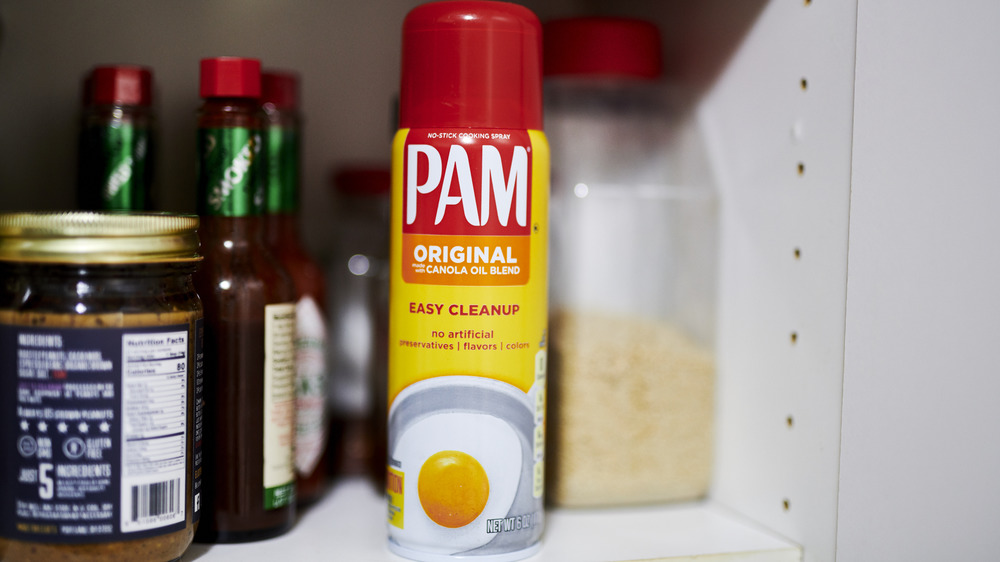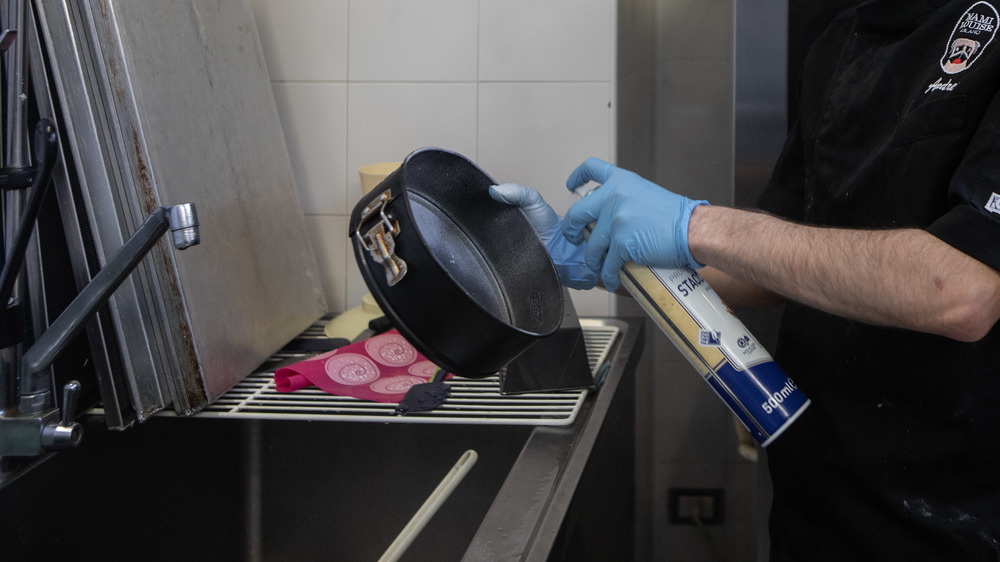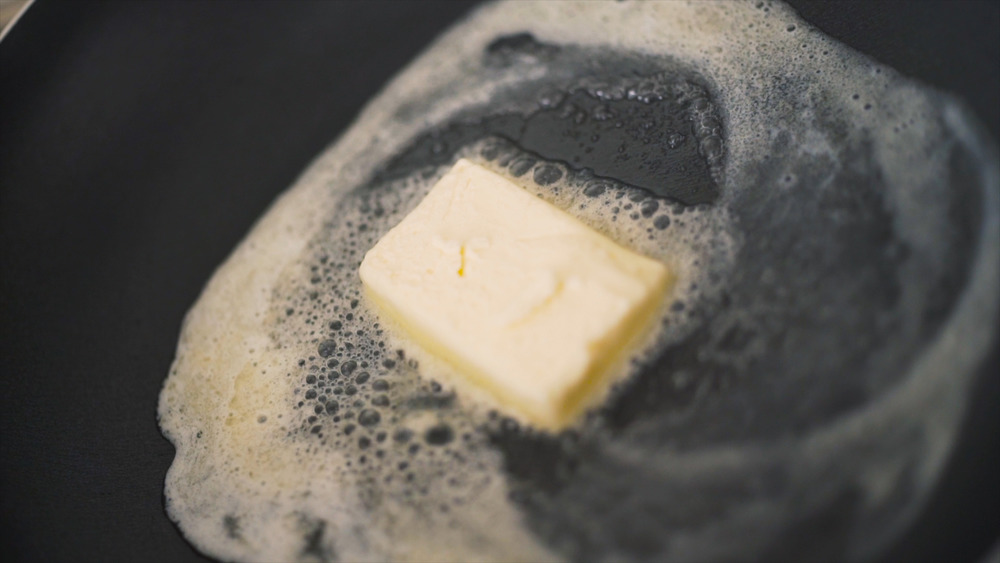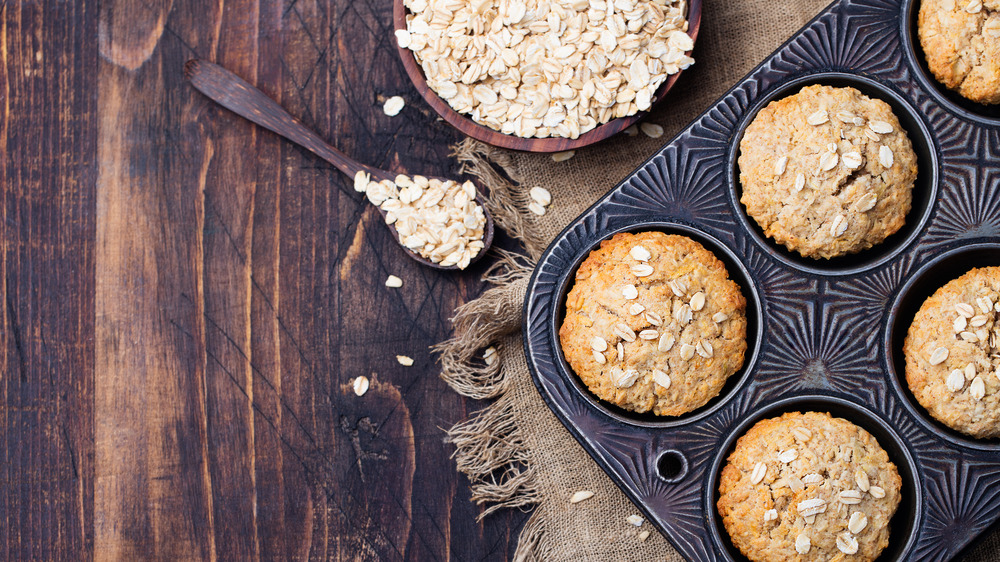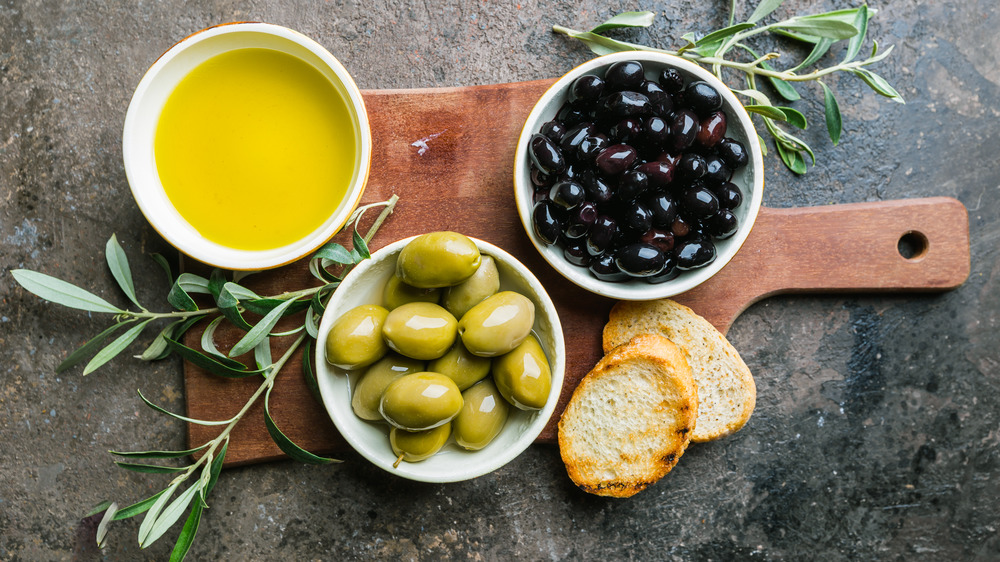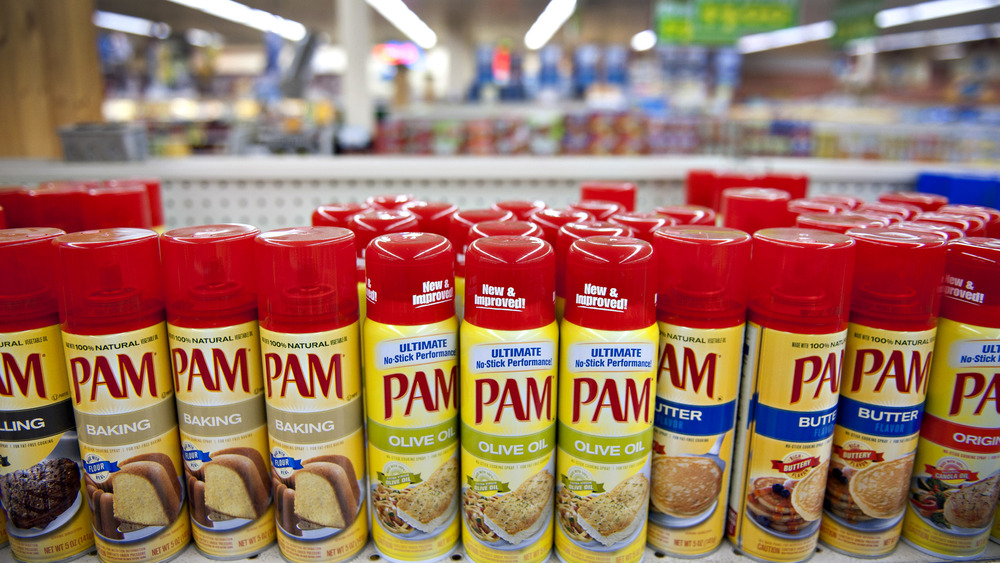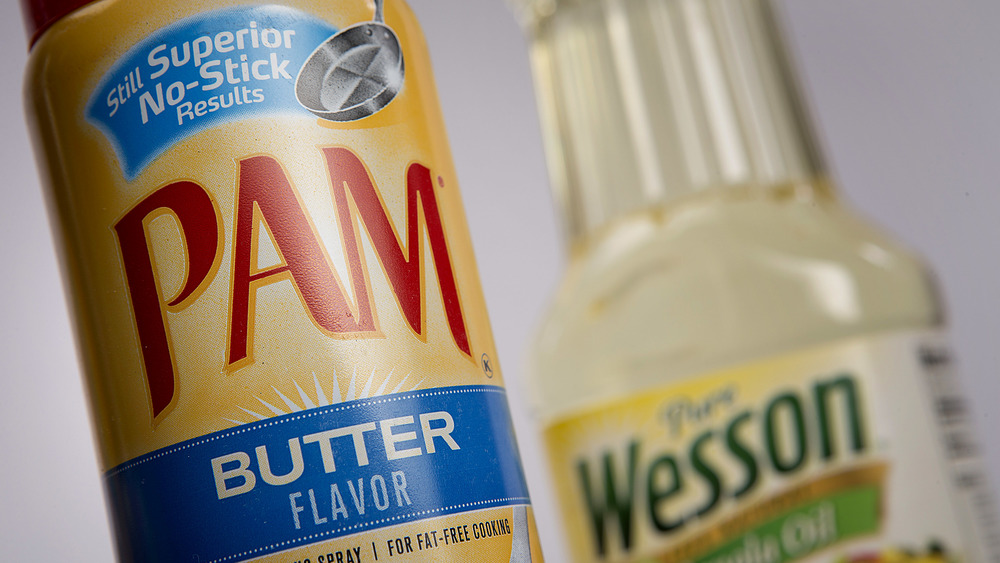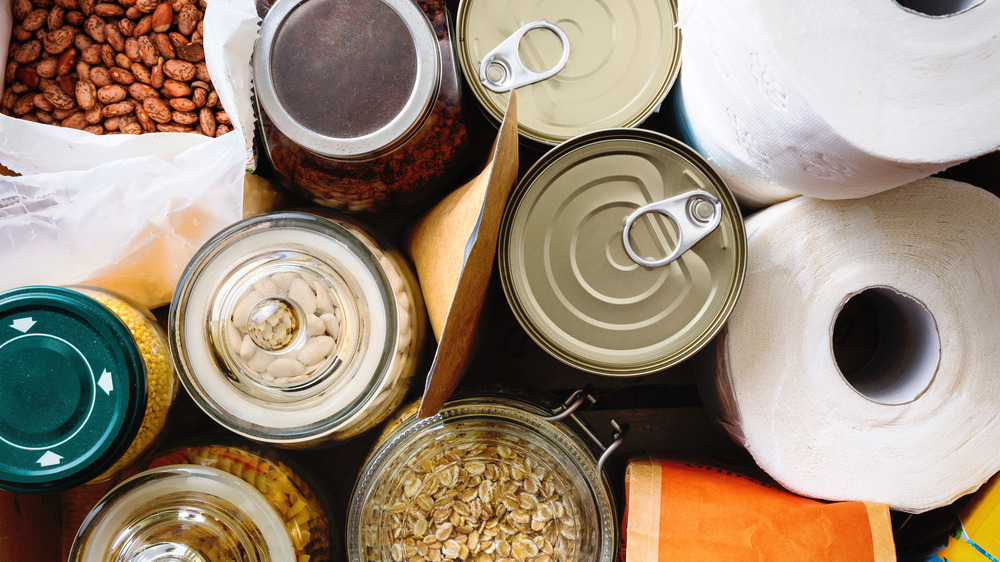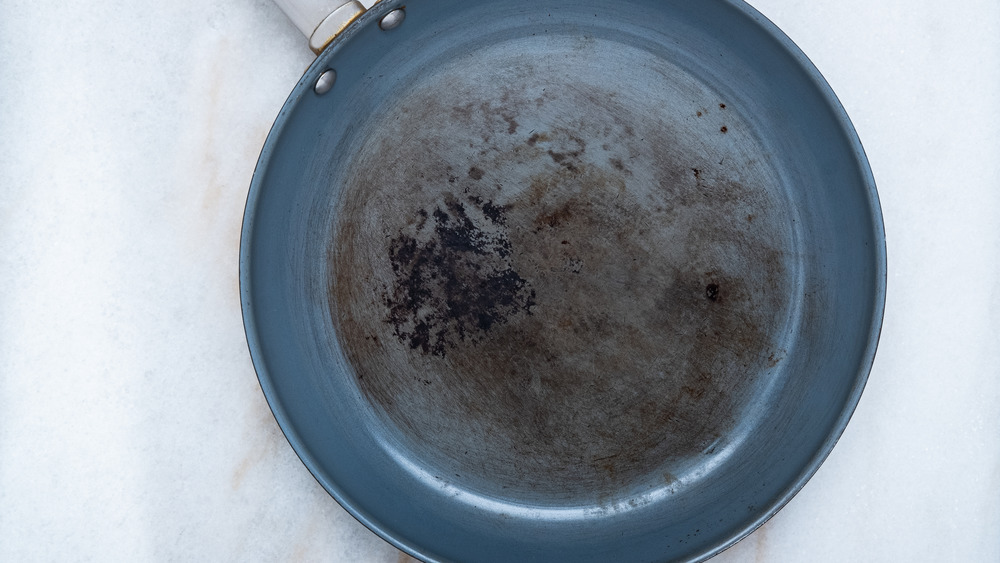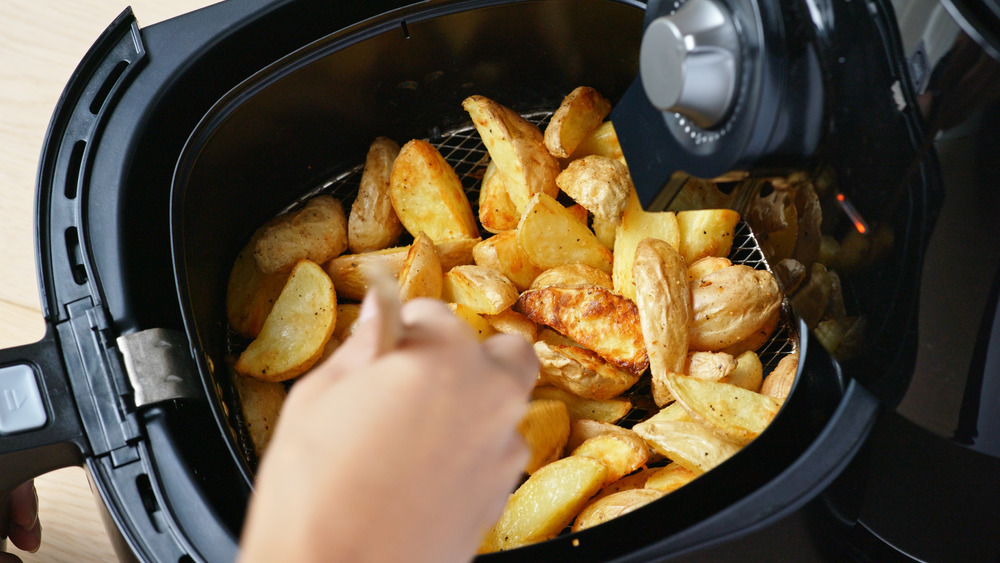The Truth About PAM
PAM: she might be everyone's favorite cooking companion. A kitchen mainstay since the 60s, this popular brand of cooking oil is a product many home cooks and bakers can't live without. PAM makes greasing any surface a quick and easy process, and with all the trendy PAM flavors hitting the market, it's the perfect solution for any kind of kitchen experiment.
PAM has many uses beyond creating nonstick surfaces on pots and pans — it can help hold parchment paper in place, it's a great option for low-fat cooking, and it can even keep an avocado from browning, according to Taste of Home. While the additives found in PAM have sounded the alarm around clean eaters, all ingredients in cooking sprays are labelled GRAS by the FDA, which means "Generally Recognized as Safe" (via Good Housekeeping). The only harm PAM could cause is if you spray oil into a flame or store the can near a heat source — some of the ingredients that help propel the oil from the can are combustible.
Though butter and oil provide more flavor than PAM can offer, it's still a versatile ingredient that makes for easy cooking and cleanup and a popular brand found in most home kitchens. However, before you rush to the store to get yourself some PAM, there's some things you should know — including when not to use the versatile cooking spray.
How PAM started
In 1959, PAM Products, Inc. was founded by Arthur Meyerhoff, Sr. and Leon Rubin. Though some people assume PAM might be named after a woman famous for homemade muffins, or something along those lines, in fact, PAM is an acronym that stands for Product of Arthur Meyerhoff. A little less sentimental, but it cuts right to the point.
By the early 1960s, PAM was a well-known household product and a replacement for other popular cooking fats like butter, margarine, or oil. It had taken the market by storm amongst the convenience-first products of that time, making it easy for home cooks to grease pans and muffin tins with the click of a button.
In the 1990s, PAM began refocusing its product to not simply solve logistical cooking problems, but also to add flavor and nutrition to each dish in which PAM was used. The company changed the PAM recipe to make it taste better, and in 1992, they transitioned to canola oil in an effort to reduce the saturated fat content in their product (via PAM). Now, the original PAM flavor is made with a combination of canola, coconut, and palm oils.
The difference between PAM and other cooking fats
PAM makes it easy to grease every nook and cranny of a muffin tin, but its convenience comes with a price, albeit a minor one. When you cook with butter or oil, you can be sure you know exactly what is going into your food — while not necessarily healthy, these fats are made using natural ingredients. PAM on the other hand, requires a few additional chemicals in order to propel the oil from can to pan in a steady stream.
According to The Spruce Eats, PAM contains three key ingredients: oil, lecithin, and butane or propane. Each of these elements plays an important role in this cooking spray. Lecithin is a kind of fat often found in soybeans and egg yolks that acts as an emulsifier so the oil sprays well and creates a nonstick coating on a pan (via WebMD).
PAM uses butane or propane to actually spray the oil. These are known as propellants, and they are essential for many products, though not one you're probably used to seeing in your food. Still, these ingredients are used in food products more than you might think, and the FDA has categorized them as "Generally Recognized As Safe" (GRAS), according to Eating Well.
The many uses of PAM
PAM is an essential kitchen tool that can be used in myriad ways. Instead of having to smear butter across pans or drip oil into muffin tins, all it takes is a quick spray of PAM to get the job done. You can also use PAM to spray the pan when you're cooking eggs sunny-side up or when popping popcorn kernels to get an even coating of fat on each one, among other food tasks that require some fat or flavor. But PAM can surprisingly fulfill some more complicated cooking needs, making it a versatile ingredient to keep on hand at all times.
According to the The Washington Post, you can spray a bit of PAM in measuring cups to keep sticky ingredients like honey or molasses from sticking to the cup. The same method works if you spray a knife or spatula when working with food that would otherwise stick all over your utensils. You can also use PAM in place of regular oil in some recipes. The Washington Post suggests substituting PAM when a recipe recommends brushing oil onto food and claims that the results are the same.
If you're using a box grater, PAM can come in handy too. If you spray the grater before using it, food won't stick to the metal as much, making for a quick and easy cleanup.
How PAM tastes
PAM is multitalented, but taste is not its product's strength. According to The Spruce Eats, most people claim cooking sprays like PAM don't taste like much of anything. Besides, cooking sprays weren't made to replace high quality olive oil you'd use to drizzle over salads or dip into with baguettes — they're meant to have a mild flavor that doesn't stand out when sprayed under cookies or cupcakes. But if you want the ease of PAM with a little extra flavor, the company makes a variety of sprayable options, most of which are still pretty mild but contain more flavor than the original.
Sometimes cooking with sprays like PAM might result in a chemical flavor in your food, The Spruce Eats reports. Unfortunately, this just comes with the territory — in order for sprays like PAM to spray evenly, they require a few chemicals added to the oil. For most people, this taste is unnoticeable, but if you have a sensitive palette, you might want to skip the spray.
Could a can of PAM explode?
In 2019, PAM ran into some legal trouble. According to TODAY, PAM bottles were exploding while consumers used them for basic kitchen tasks. Eight people filed suits against Conagra Brands, the makers of PAM, alleging that they had been severely injured by the exploding cans.
Because PAM includes propellants such as propane or butane used to spray the oil, the product is highly flammable (and there's even a warning on the can!). When these propellants are exposed to too much heat, they can easily get too hot and catch fire, which would cause the can to explode.
Dan Hare, a director at Conagra Brands, told TODAY that average consumers had nothing to worry about: "When Pam is used correctly, as instructed, it is a 100-percent safe and effective product. Pam Cooking Spray is used safely and properly by millions of people several times a day, every single day." However, Hare might want to keep that tidbit to himself in the presence of the people who suffered third-degree burns and blindness because of his product...
Different PAM flavors
In 2003, PAM started branching out and creating new kinds of PAM flavors for their customers. According to the company website, the first specialty PAM was a combination of the original neutral oil and flour, a PAM variety that still exists today and is popular among bakers (via PAM).
Shortly after, PAM released a new can made specifically for all your grilling needs — this option uses pure canola oil, which gives it a higher smoke point than the original PAM, making it suitable to withstand the high temperatures of the barbeque. PAM also offers olive oil- and butter-flavored sprays, both of which provide extra flavor while greasing your pan. If you're worried about cutting calories, these products offer a lighter alternative to the real options without losing the nonstick qualities of these fats.
In recent years, PAM has added all kinds of different oils to their repertoire — you can find coconut oil, avocado oil, and even organic extra-virgin olive oil in spray form.
Is PAM good for you?
According to Food Network, PAM is best in small doses. While the spray helps people cut back on calories while cooking, the labeling can be misleading: on the can, a single serving is so small it makes it seem like the calories are nonexistent. But, as Jaclyn London explained to Good Housekeeping, a "serving" of PAM is about a one-third of a second spray, and chances are, you're going to use at least a little more than that.
If you're trying to avoid extra calories, Food Network cautions against substituting PAM for all fats. Butter and oil create a depth of flavor that simply can't compete with cooking spray. If you're using PAM all the time, you'll probably start to crave fatty, unhealthy foods to make up for the taste you aren't getting from PAM. Instead, it's best to incorporate butter and oil into your diet in moderation, using PAM as a substitute on occasion, but not all the time.
PAM also contains various chemical additives you might not want to consume on a daily basis. Soy lecithin is often found in PAM, so you'll obviously want to steer clear of the cooking spray if you have soy allergies, as Food Network explains. But per Jaclyn London, while there might be controversy against the chemicals in cooking sprays, their ingredients have been approved by the FDA, after all.
The shelf life of PAM
Though there's some controversy around how long a can of cooking spray lasts, it's generally advised to throw out the can after about two years. Like most oils, PAM can go rancid if left unused for too long. But so long as you use up the can within a few years, the oil should taste nice and fresh — or, as fresh as can be expected from canned oil.
It's also important to make sure you store PAM in a safe location. As The Spruce Eats explains, because cooking sprays like PAM are flammable, keeping them in a cool, dark spot for storage is a necessary safety precaution. If your kitchen gets hot, you might want to consider keeping the PAM somewhere else or stowed away in a cool cupboard. Any location that gets up toward 120 degrees is strictly off limits for PAM. And it should go without saying that spraying oil near an open flame is a dangerous move — we recommend avoiding it!
PAM is not good for all pans
Although you might be tempted to spray some PAM in any sort of pan for an easy grease-up, you might want to take your finger off the trigger and first double check whether the pan you reached for is the right one.
If your pan already has a nonstick surface, it's best to use regular oil or butter instead of PAM or other cooking sprays. It might seem counterintuitive, since PAM is made of mostly oil, but the other chemicals that make PAM sprayable have been known to damage nonstick pans. For example, when lecithin, a main ingredient in cooking spray, is heated, it can stick permanently to the nonstick surface of certain pans. After a while, the chemical builds up on the pan and leaves a gummy residue, rendering your nonstick pan sticky.
If you really want to lower the fat used in your cooking in a nonstick pan, you can make your own cooking spray with an empty spray bottle or, for an even easier fix, wet a paper towel with oil and use it to spread a thin layer of fat onto your pan.
Be careful when using PAM in fryers and cookers
The same caution that you should take when using PAM in nonstick cookware should also be applied to fryers and cookers.
Firstly, you should avoid using PAM in air fryers. The additives and aerosols in PAM and other cooking sprays can damage your air fryer. This is partly because just like with nonstick pans, air fryers already come with a nonstick coating on their baskets, and cooking spray can damage this coating and cause it to flake off. The solution is the same: You can make your own non-aerosol spray by filling an empty spray bottle with your fat of choice and coat your air fryer safely.
As for your Instant Pot, according to the official Instant Pot overheat protection guide, cooking spray is perfectly safe to use on the pressure cooker. In fact, the guide advises that you can use cooking sprays to grease, deglaze, and suate in your Instant Pot just like with other oils and fats
